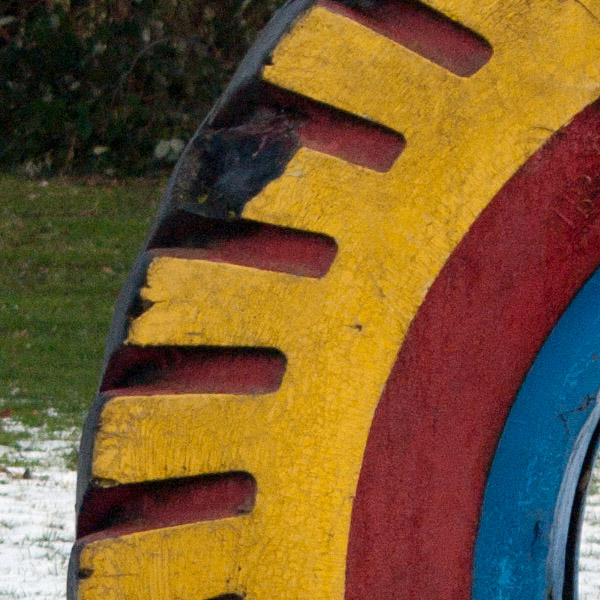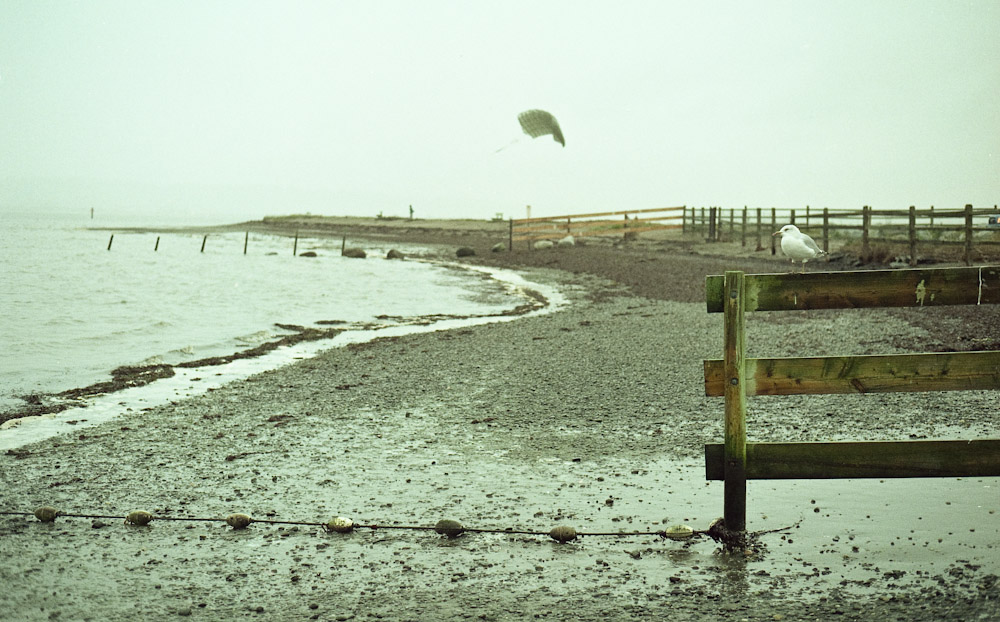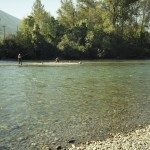Nov
29
2010
 There is a lot of discussion around the light gathering ability of current digital SLR cameras at this time on the Internet. In case you are absorbing this post at some future date I am writing this in 2010 back when cameras could only capture images in murky darkness not inky blackness. Sorry about the fossil fuel thing, who new? Anyway back to the present, so there is all this discussion regarding which brand and which model of camera has the best signal to noise ratio and processing engine in order to make all images look the same no matter what circumstances you decide to take the picture in. Well before such a comparison is no longer possible do to the dwindling availability of a thing called film I though I should provide some perspective. I took some images with Kodak MAX 800 film and took similar pictures with my Pentax K-7 DSLR set at a comparable ISO 800. So when discussing ISO speeds of 12,800 and greater perhaps a small reminder of how much has changed in a few short years is warranted.
There is a lot of discussion around the light gathering ability of current digital SLR cameras at this time on the Internet. In case you are absorbing this post at some future date I am writing this in 2010 back when cameras could only capture images in murky darkness not inky blackness. Sorry about the fossil fuel thing, who new? Anyway back to the present, so there is all this discussion regarding which brand and which model of camera has the best signal to noise ratio and processing engine in order to make all images look the same no matter what circumstances you decide to take the picture in. Well before such a comparison is no longer possible do to the dwindling availability of a thing called film I though I should provide some perspective. I took some images with Kodak MAX 800 film and took similar pictures with my Pentax K-7 DSLR set at a comparable ISO 800. So when discussing ISO speeds of 12,800 and greater perhaps a small reminder of how much has changed in a few short years is warranted.
 Pentax K-7 ISO 800
Pentax K-7 ISO 800

Kodak Max 800 taken with a Pentax ME Super.
 Pentax K-7 ISO 800
Pentax K-7 ISO 800
 Kodak Max 800 taken with a Pentax ME Super.
Kodak Max 800 taken with a Pentax ME Super.
As an addendum I’m aware that this wasn’t the best possible film to use but it is what I had on hand and I also didn’t do any noise reduction on either the film or the digital files.
no comments | tags: Cameras, exposure, film, ISO, Pentax, Photography | posted in Cameras, Photography, Processing
Nov
28
2010
A few more Minolta X700 shots.



1 comment | tags: camera, Cameras, film, Minolta, Photography, X700 | posted in Cameras, Photography
Nov
23
2010
When you’re out photographing and you notice something interesting the first reaction may be to snap a picture, you wouldn’t be wrong. The next reaction should be how can I make that better. Questions such as camera settings and where should I stand and how will that look need to be thought through. It may come naturally to envision a scene from a different vantage point or it may come from practice. Practice should take the form of thinking about how something will look from somewhere else and then going there and seeing for yourself. Technically you don’t even need a camera it just requires actually thinking about what you are seeing around you. Using a zoom lens gives more options but may actually hinder this type of creativity as it tends to make you stand where you are and try to frame a scene, rather than actively searching.
Here is an example. I saw this scene and took an initial image. I then noticed the curve of the shore and how the fence could make an interesting foreground element. So I left the trail and headed for the beach.

And here is the image that resulted. I did have to wait for the man trying to fly the parachute to get it airborne again and luckily this seagull was the bravest of them all and didn’t fly off.

1 comment | tags: camera, composition, film, Minolta, X700 | posted in Composition, Photography, Uncategorized
Nov
19
2010
I’ve taken a try at recreating the look that my Pentax K-7 generates using the digital reversal filter (slide filter). It appears that it isn’t that simple a matter and that the processing may vary depending on the source image. When optimized for one image it may produce different results on another. It still makes an admiral effort and has a look all it’s own.
 Original file
Original file

Pentax Digital Camera Utility 4 (Reversal)

Wallace’s Lightroom Reversal Preset.
You can see that while there is a close match in these images (blues and yellows are a bit of a problem) the results diverge even more on some real world images

Original Image

Pentax Digital Camera Utility 4 (reversal)

Wallace’s Lightroom reversal preset.
You can download this preset by right clicking and saving the target file to your computer. You can also find out how to add this or any preset to Lightroom by doing a Google search. Download Preset
1 comment | tags: Pentax, Photography, Processing
Nov
15
2010

My first serious camera that I bought for myself was the Minolta X700. I still consider it one of the last great manual focus SLR cameras and it has always been reliable and accurate. It was first introduced in 1981 and apparently it was made right up until 1999. I purchased mine in the late 1980’s at a department store across the border in Washington state. I’m not sure how many rolls of Kodachrome 64 I ran through it but where ever I traveled it went along. I recently shot two rolls of film with it and was reminded why it is so good. It is functional, without frills, with easy to control settings that don’t get in the way of creativity.





no comments | tags: camera, Cameras, Minolta, Photography, X700 | posted in Cameras, Photography
Nov
11
2010
Here is another example of using multiple exposures to extend the effect of time. I had set my ISO to the lowest value available (100 ISO) and had stopped the lens down as far as I wanted to without having to compromise image quality, so this put me in a position where I had a shutter speed of 1/2 a second. This is certainly enough to blur the fast moving water but not enough to give it that soft gossamer look I wanted. So I set my Pentax K-7 to do 9 exposures with auto EV adjustment. I also used mirror up and remote triggering to limit any camera movement.
K-7 70mm, f11, 0.5 sec

K-7 70mm, f11, total exposure time 0.6 seconds from nine individual exposures.

2 comments | tags: camera, exposure, Pentax, Photography | posted in Composition, Photography, Processing
Nov
6
2010

I really liked the background colours in this image from today and the contrasting droplet. It’s difficult to take macro shots like this by hand as even the slight swaying back and forth that happens as you stand effects what is in focus. By persisting though you can eventually get one that works.
no comments | tags: focus, macro, Photography | posted in Composition, Photography
Nov
2
2010

Everyone loves a good oxymoron right. The Big Mini, is a modern classic that is clearly misunderstood. The camera is small so that must be the mini, so what’s big? The pictures it creates? Not really, there the same size as any other 35mm camera. OK it’s just a catchy name for a decent camera. One nice feature is the +- 1.5 exposure compensation, which works great for backlit scenes, like the one of the trees with the sun behind. It’s also quite good at close distances focusing down to 35cm. Hmm 35mm lens,35mm film, f3.5, 35cm close focus, those stats almost exactly seem like they are accidentally on purpose.
Ok that’s enough, I’m almost done, how many oxymorons are in my post of vexing fun?
1 comment | tags: Big Mini, camera, film, Konica, Photography | posted in Cameras, Photography
 There is a lot of discussion around the light gathering ability of current digital SLR cameras at this time on the Internet. In case you are absorbing this post at some future date I am writing this in 2010 back when cameras could only capture images in murky darkness not inky blackness. Sorry about the fossil fuel thing, who new? Anyway back to the present, so there is all this discussion regarding which brand and which model of camera has the best signal to noise ratio and processing engine in order to make all images look the same no matter what circumstances you decide to take the picture in. Well before such a comparison is no longer possible do to the dwindling availability of a thing called film I though I should provide some perspective. I took some images with Kodak MAX 800 film and took similar pictures with my Pentax K-7 DSLR set at a comparable ISO 800. So when discussing ISO speeds of 12,800 and greater perhaps a small reminder of how much has changed in a few short years is warranted.
There is a lot of discussion around the light gathering ability of current digital SLR cameras at this time on the Internet. In case you are absorbing this post at some future date I am writing this in 2010 back when cameras could only capture images in murky darkness not inky blackness. Sorry about the fossil fuel thing, who new? Anyway back to the present, so there is all this discussion regarding which brand and which model of camera has the best signal to noise ratio and processing engine in order to make all images look the same no matter what circumstances you decide to take the picture in. Well before such a comparison is no longer possible do to the dwindling availability of a thing called film I though I should provide some perspective. I took some images with Kodak MAX 800 film and took similar pictures with my Pentax K-7 DSLR set at a comparable ISO 800. So when discussing ISO speeds of 12,800 and greater perhaps a small reminder of how much has changed in a few short years is warranted. Kodak Max 800 taken with a Pentax ME Super.
Kodak Max 800 taken with a Pentax ME Super.































